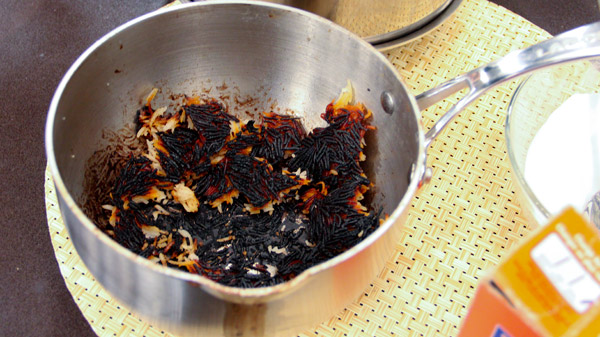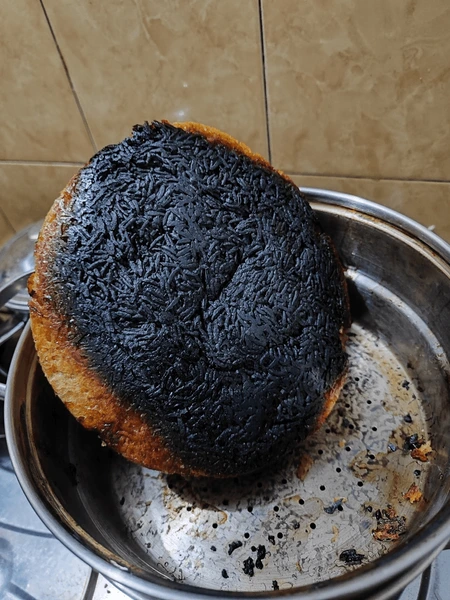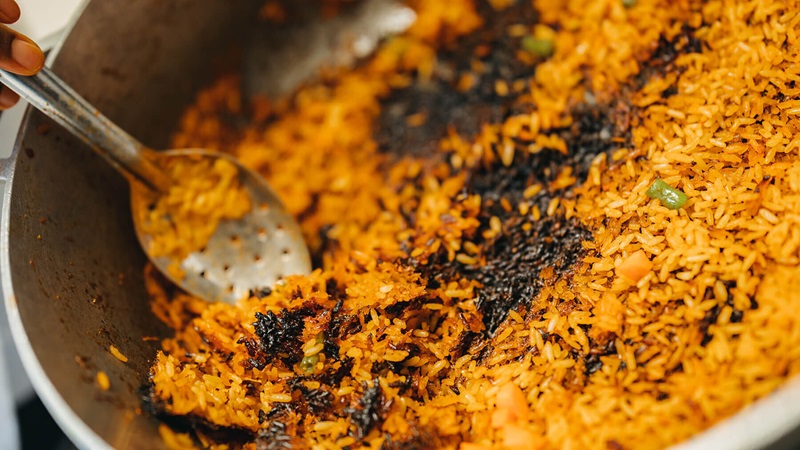Burnt food, often dismissed as merely unappetizing, poses significant health risks that cannot be ignored.
When food is charred or burnt, it undergoes a chemical transformation, releasing toxic compounds that can have serious consequences for your well-being.
Sierraloaded underscores the health hazards linked to the consumption of burnt food in this article:

Cancer Risk: Burnt food contains carcinogenic compounds like Polycyclic Aromatic Hydrocarbons (PAHs), Heterocyclic Amines (HCAs), and Acrylamide. These substances have been linked to an increased risk of colorectal cancer, breast cancer, and prostate cancer.
Neurological Damage: Neurotoxins like Advanced Glycation End-products (AGEs) and lipid peroxides, found in burnt food, can damage brain cells. This can lead to cognitive impairment, memory loss, and neurodegenerative diseases such as Alzheimer’s and Parkinson’s.
Digestive Issues: Burnt food can irritate the digestive tract, causing inflammation and oxidative stress. This can lead to heartburn, bloating, diarrhea, and abdominal pain.
Cardiovascular Disease: Regular consumption of burnt food can increase blood pressure, raise cholesterol levels, and damage blood vessels, increasing the risk of heart disease.
Weakened Immune System: Burnt food contains immunosuppressive compounds, making you more susceptible to infections.
Respiratory Problems: Inhaling smoke from burnt food can lead to respiratory tract irritation, asthma, and Chronic Obstructive Pulmonary Disease (COPD).

Prevention Tips
Cook at Lower Temperatures: Avoid charring or burning food by cooking at lower temperatures.
Healthy Cooking Methods: Use cooking methods like steaming or roasting instead of grilling or frying.
Limit Reheating: Avoid reheating food multiple times, as this can contribute to the formation of harmful compounds.
Choose Healthy Oils: Opt for cooking oils with high smoke points to minimize the breakdown of fats and the creation of harmful substances.
Recognizing Burnt Food
Blackened or Charred Appearance: Burnt food often has a dark, charred appearance.
Unpleasant Smell: Burnt food may emit an acrid or unpleasant odor.
Bitter Taste: Burnt food may have a bitter or unpleasant taste.
Conclusion
While an occasional burnt meal may not pose significant harm, regular consumption can have severe health consequences. By being mindful of your cooking techniques and food choices, you can protect your health and reduce your risk of these serious conditions.



 5 Comments
5 Comments 










Beware of “krawo.”
Bo do if una nor get tin for post una tell we ya🙄 una wan plew we @ fr de eat crawo? R beg o😂
Una comot biyen we lovely en faithful KRAWO. We nor go gree make una gee am bad name.
Krawo has always been a faithful supporter and loyal friend since our grandparents were in primary school lol.
Padi wunar know How many years we dea eat krawo ? Me nar me 44yrs dis since 6yrs nar krawo we dea eat ….Is like Mamie yeabu don greedy dis man with that crookery krawo…nai mak e wan discouraged we so in one go dea eat am…Padi nar lied dis particular one nor dea woke ya….
But people have been eating this since I can’t imagine how long, and I have never had of any body been diagnosed of eating burnt foods. Where are you guys taking us to?
Have just explained this to my grandmother and she told me what I can’t said on social media.
Pv me for what she said.
To my kindy opinion, this is a black 🖤 lies 🤥